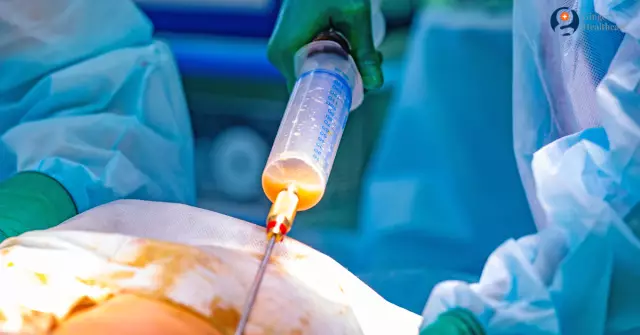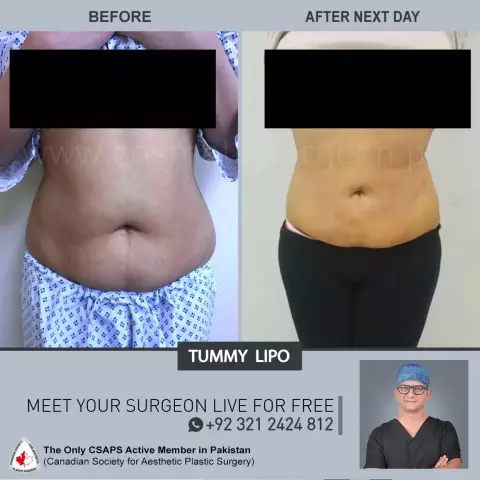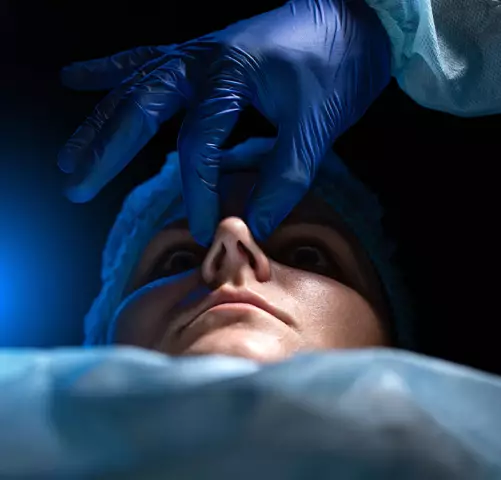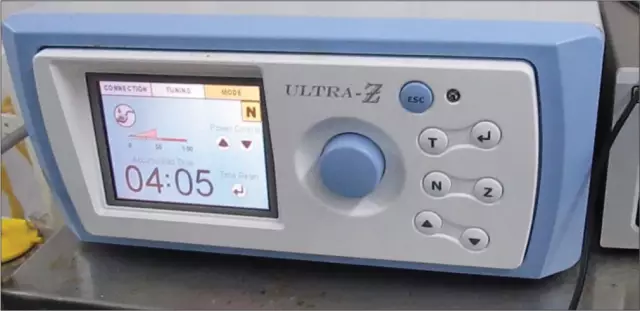- Author Rachel Wainwright [email protected].
- Public 2023-12-15 07:39.
- Last modified 2025-11-02 20:14.
Liposuction

Liposuction is a very common technology for correcting fat deposits. During this procedure, excess fat is sucked out of the body tissues by a special apparatus. There are a wide variety of liposuction techniques.
Types of liposuction
Liposuction can be done in a variety of ways. The doctor performs vacuum liposuction exclusively by hand. He makes small incisions and inserts curettes (special instruments) under the skin to thin subcutaneous fat. The liquefied fat is then sucked off with a special vacuum. This method is quite traumatic. After the operation, the patient needs to wear bandages and special underwear for two to three months.
In ultrasonic liposuction, fat cells are destroyed by ultrasonic waves. This method burns a fairly large amount of fat. The healing of tissues after such liposuction occurs rather slowly due to their thermal damage. The patient should wear special underwear after surgery for at least a month.
Soft lipmodel (gentle lipomodel) is the most modern liposuction technique. During such an operation, fat cells are destroyed by high-frequency currents. The destroyed particles of fat are removed through microscopic punctures. After such a gentle operation, the patient can return to his usual rhythm of life.
If conservative methods of treatment (drug therapy, fitness, diet) are ineffective for the patient with obesity, then the specialist may recommend serial liposuction. This type of liposuction is not aimed at correcting body contours, but at reducing the patient's weight. If the amount of fatty deposits is too large, then the operation is performed in several stages.
Liposuction zones
More than 25 liposuction zones are distinguished on the human body. The number of zones varies according to the degree of obesity of the patient. Fat cells are deposited in a person in various places - on the sides, buttocks, thighs, on the abdomen, on the chest, face, in the subscapularis and axillary area, on the forearms and shoulders.
The liposuction technique is selected individually, depending on the patient's anatomy, bone structure.
Body liposuction is performed on the thighs, chest, sides, anterior abdominal wall, shoulders and back. Abdominal liposuction is best done in combination with abdominoplasty. Liposuction of legs and buttocks is also highly demanded.
Chin, face and neck liposuction
Face contours can be improved with face and neck liposuction. After all, excessive fat deposits under the chin and in the folds of the neck are found even in girls. After the operation, the neck skin is smoothed very quickly. Chin liposuction is a fairly simple and safe operation. This operation is performed under local anesthesia. It provides for an incision from the inside of the mouth or from the outside of the face. A special tube is inserted into the incision. With this tube, excess fat is sucked out of the chin area.
Laser excision for chin liposuction is carried out in a similar way, but instead of a tube, laser beams are used. However, this laser surgery does not completely remove all fat deposits from the chin. Laser liposuction of the chin is not performed for liver and kidney diseases, diabetes mellitus, as well as for blood clotting disorders. The laser not only burns fat, but also tightens sagging and flabby chin skin.
Liposuction of legs and abdomen
Leg liposuction is the surgical removal of fat cells from the knees, lower legs and thighs.
On the outer and inner thighs, some women accumulate reserve adipose tissue. And the usual methods of dealing with fat deposits in such cases are ineffective. Therefore, liposuction of the inner and outer thighs is the most effective way to solve this problem. Thigh liposuction is performed separately or as part of a general skin tightening operation for the entire body.
Leg liposuction will not cure general obesity, as it does not affect metabolic processes.
Liposuction of the thighs helps to give them an aesthetically pleasing shape. This operation will help get rid of excess body fat and shape the contours of the thighs.
Liposuction technique
There is a specific technique for performing liposuction. The operating field is treated with an antiseptic and covered with a sterile bandage, and then the operation itself is performed. The tissues are cut with a liposuction cannula. With this special tool, you can make a cut to a minimum length (no more than a centimeter). A probe is then inserted through the incisions. The probe destroys fat cells and mixes them with liquid. The resulting emulsion is sucked out of the tissues using vacuum aspiration. The suture is applied to the incision using a special technology, so the scar will practically not be noticeable in the future. The duration of the operation depends on the amount of fat deposits. The patient should wear a compression garment immediately after surgery. In a hospital, a patient can stay from two hours to two days. The length of stay depends on the extent of the surgery.
Evaluation of liposuction results
About a week after the operation, the patient's stitches are removed or the stitches dissolve independently. After surgery, small amounts of fluid may leak through the incisions. Immediately after the operation, bruises, soft tissue swelling, general weakness, and minor pain are possible in the area of surgical intervention.

For a correct assessment of the result after liposuction, time must pass. After all, fat cells are partially destroyed and for some time after liposuction. Swelling in the areas where the probe is inserted also interferes with the correct assessment of the result. You can only be sure of the success of the operation after two to five months. If necessary, the operation can be repeated six months later.
Contraindications to liposuction
It is impossible to carry out liposuction with diabetes mellitus in any form, with severe forms of hypertension.
Any serious somatic diseases, open tuberculosis, exacerbation of diseases of the digestive tract can be considered contraindications to liposuction. The operation should be abandoned for any purulent skin diseases in the liposuction zones.
Before liposuction, the plastic surgeon determines the necessary examinations and the scope of the operation. The doctor usually prescribes a blood test, ECG, consultations of narrow specialists (endocrinologist, gynecologist, therapist). Additional examinations are necessary to identify possible contraindications to liposuction in order to prevent possible complications.
Found a mistake in the text? Select it and press Ctrl + Enter.






